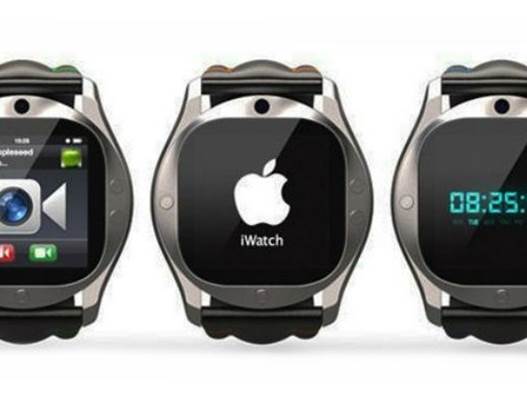What and when?
Google says its Glass will be available to
the general public before the end of the year. Apple, as usual, is saying
nothing, though analysts seem confident that it has something up its sleeve
(literally).
Jeffries analyst Peter Misek argues his
checks indicate a greater than 50 per cent chance that Apple will launch an
iWatch this year. He believes it will have a 1in screen and a $200 price tag.
An anonymous Bloomberg source also claims
that Apple wants to introduce the iWatch this year. Features under
consideration include the ability to make calls, see the identity of incoming
callers and check map co-ordinates. The iWatch would also act as a pedometer
and have sensors to monitor health-related data, according to that source.

An
anonymous Bloomberg source also claims that Apple wants to introduce the iWatch
this year.
Other iWatch feature suggestions tend to
focus on the idea it will be a companion device that extends the existing
functionality of the iPhone and iPad by displaying message and calendar
notifications, offering another input for the Siri personal assistant, and
controlling smartphone/tablet features, like music playing. The device could
also conceivably be used as a wearable remote for home automation systems. A
quick shake of your wrist to turn off/on room lights would be a convenient
tool.
There are also claims that the iWatch could
be a standalone device - one not requiring a companion smartphone or tablet. It
could even be marketed as a budget smartphone for the booming markets of India
and China.
However, while it’s true that one day Apple
might be able to include cellular functionality and enough of the core features
of a smartphone within a wrist watch, for now that idea remains in the realm of
science fiction. A number of issues need to be overcome. For example, it’s next
to impossible to insert a cellular radio and a sufficient battery into such a
small package. For now, it would be virtually impossible to match the
capabilities of an iPhone in a wristwatch; it’s too small to house the storage,
battery, and other technologies necessary.

You
Wear it Well There are a number of ideas of what the iWatch may look like, a
search in Google Images brings up these.
Navigation Issues
There are also issues with the iWatch as
companion device argument. The tiny screen, potentially just 1in square, would
make interface design difficult and user navigation even harder. With this
challenge in mind Apple might choose to rely on Siri as an input mode, but the
iOS personal assistant has not given a stellar performer since its launch a
year and a half ago. And it’s still in beta.
As for the design of Apple’s watch, we know
the company has a license to use an advanced metal alloy process patented by
LiquidMetal. We also know Corning, makers of the Gorilla Glass used in the
iPhone, has developed flexible display technology called Willow, though company
president, James Clappin recently warned it will take at least “three years”
until devices appear that use it.

As
for the design of Apple’s watch, we know the company has a license to use an
advanced metal alloy process patented by LiquidMetal.
But an iWatch may not exist now or in the
future, and if it does, we’re in the dark as to what its capabilities might be.
Perhaps it will turn out that Apple was working on iGlasses instead.
Speculation as to Apple’s future plans is difficult. However, it’s tempting to
think the inventor of the PC intends to keep its grip on the evolution of
Post-PC. With this in mind, it’s interesting to note the 1998 iMac had a 233MHz
CPU, 4GB storage and 32MB of RAM. In 2007, the original iPhone held a 600MHz
CPU, 8GB storage and an estimated 128MB of RAM.
As Venture Capitalist Ben Horowiz said:
“Imagine somebody said 15 years ago, you will have a very powerful computer in
your pocket. People would have thought it was crazy”.